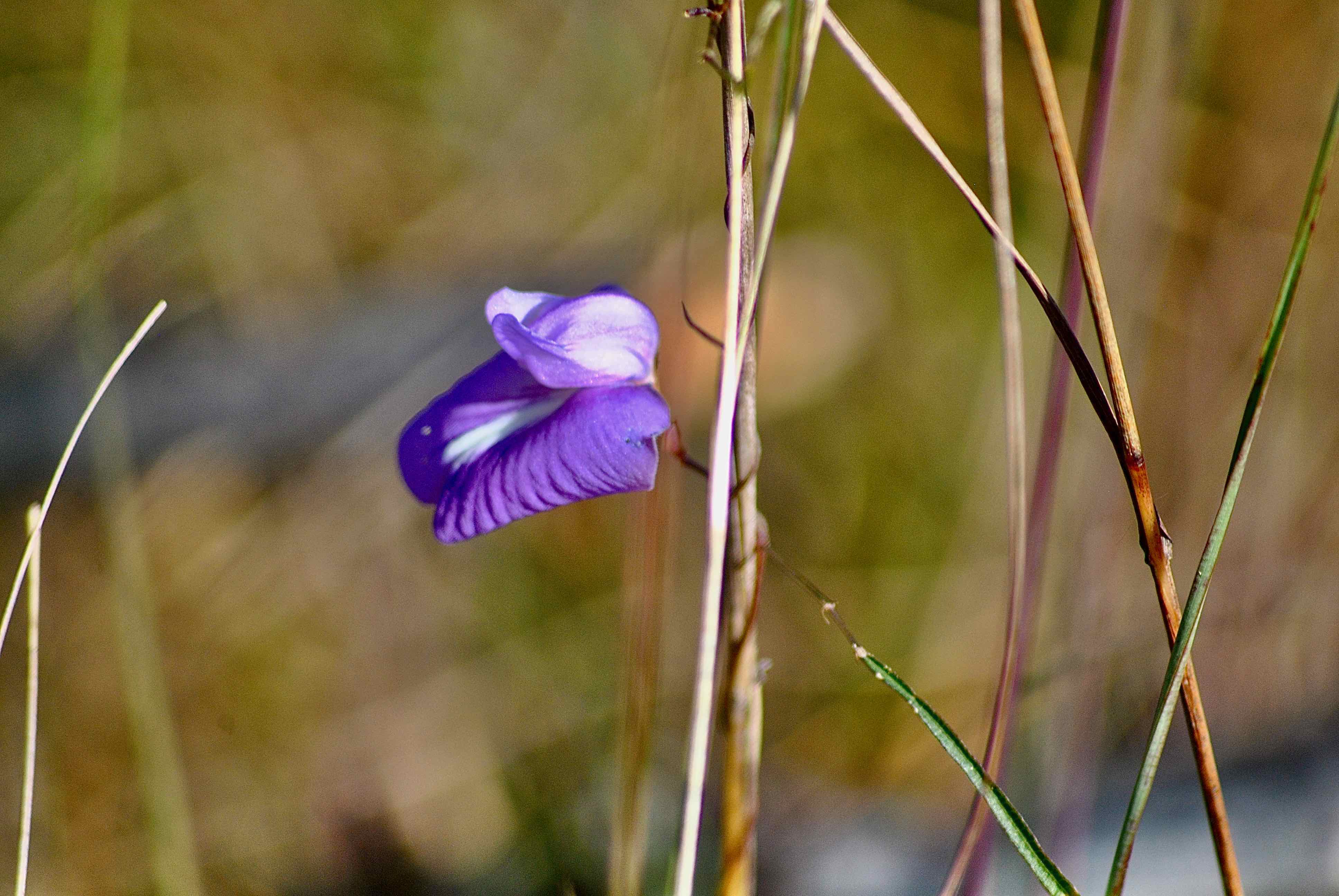
Spurred butterfly pea, photographed at National Key Deer Refuge, Big Pine Key, Monroe County, in December 2013.
Two things conspicuous things about spurred butterfly pea, Centrosema virginianum. Its flower hangs upside down, and it tells bugs where to go. As in where to find the nectar.
Spurred butterfly pea is a fairly common wildflower found in pinelands and coastal uplands and other sandy habitats pretty much throughout Florida. You can count the number of counties where it's not found on one hand and have fingers left over. It's that widespread. For the record, it's also a Florida native.
Its range extends far beyond the borders of the Sunshine State, as far north as New Jersey, where it is listed as endangered, and as far west as Texas. It's also found throughout the Caribbean, Mexico, Central America and South America. It has become naturalized in parts of West Africa and grown for agricultural uses in Australia.
Spurred butterfly pea is a perennial vine that can reach six to eight feet in length. It can grow on the ground, or more likely, wrap itself around nearby plants. The stem is on the woody side but isn't strong enough to keep the plant upright. It doesn't have tendrils to grab on to its host but the stem will wind itself around whatever is nearby. Leaflets are variably lance-shaped, but tend to be broader in Broward County and points north, long and narrow in Miami-Dade and Monroe counties. The flowers range from pink to lavender to white, and are roughly as wide as they are long, unlike milk peas, which are long and narrow. The white patch in the center of the flower acts as a sign, telling any potential pollinating insect where to go to find the good stuff. Flowers appear all year but mostly in the summer and fall.
Like all peas, the fruit is a pod, which can contain as many as 20 seeds. It's not edible for us human types, but is a moderate source of food for wildlife, particularly mammals, according to the U.S. Department of Agriculture.
Spurred butterfly pea is a host plant for two butterfly species, the long-tailed skipper and the cloudywing skipper. That makes it an attractive plant for butterfly gardeners. It's also used in landscape restorations and natural landscapes.
Few commercial nurseries carry the plant — it's windy habit can make it difficult to handle — but it grows easily from seed. And there is no shortage of seed vendors on the internet. The one caveat we've read is that in small gardens, it should be grown on a fence or trellis to keep it under control.
Spurred butterfly pea is a legume, meaning it has the ability to "fix" nitrogen from the air into the soil with the help of certain bacteria. Some use the plant as a "green manure" to improve the soil in a fallow field. It's also used as a ground cover to control erosion. It's also been considered for use in pastures to feed cattle, particularly in Australia, because of its relatively high protein content.
Other names include butterfly pea, climbing butterfly pea, spurred butterfly-pea, Virginian centro in Australia, wild blue vine, bluebell and wild pea in Barbados. It is a member of Fabaceae, the pea family.
National Key Deer Refuge
Photo Gallery — Click on photo for larger image
U.S. Department of Agriculture Distribution Maps






